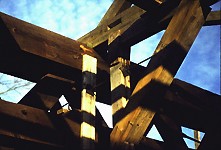 |
|
 |
| As the lumber is repaired
or replaced, it was reassembled. When side trusses were adjusted, roof
timbers were put back in place. |
|
The mortise and tenon joints are
held together with traditional cylindrical wooden pegs. |
 |
|
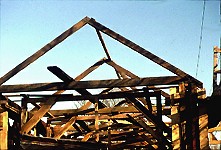 |
| Wooden planks were used to steady
the structure until all structural members were put in place. |
|
When the structural members were
in place, the roof needed to be replaced. |
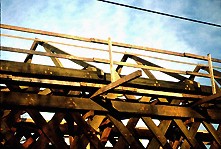 |
|
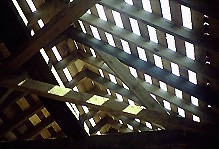 |
| Here a series of "A"
shaped roof timbers is in place that make the roof line. |
|
A series of wooden planks were
nailed in place along the roof line. These planks will support the shingles. |
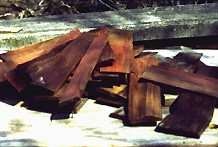 |
|
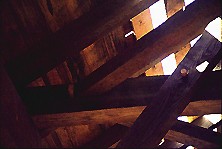 |
| Wooden shingles were used for the
roof. This is the type of roof that the bridge had originally. |
|
The wood shingles were nailed onto
a series of wooden planks attached to the roof. |
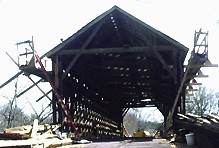 |
|
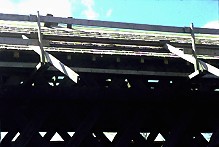 |
| This is a view of the end of the
bridge with most of the shingles in place. |
|
This is a picture of the
exterior view of roof and scaffolding with the shingles in place. |
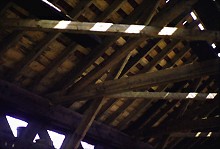 |
|
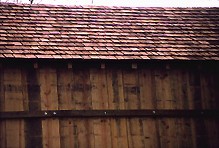 |
| This is the interior view of the bridge with
most of the shingles in place. |
|
Here is the completed wooden roof. |











